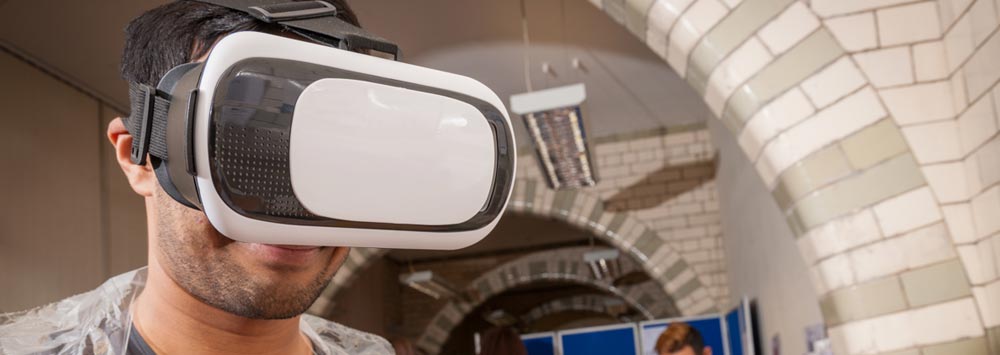Providing medical students with the opportunity to engage in complex and emergency based clinical situations has always been challenging, and in order to provide students with safe opportunities in which to practice these key skills clinical simulation is often used as a teaching and learning tool. However this is an expensive teaching method, meaning opportunities can be restricted. The Medical School has developed 360° videos accessed using VR headsets to augment students’ experiences of simulation therefore doubling the amount of simulated learning opportunities in the course. This approach could be transferred to any other discipline which involves restrictive educational settings.
Please briefly describe the activity undertaken for the case study
Including the purpose of the activity (i.e. to utilise disciplinary or technological developments, to improve student satisfaction etc.); the aim and/or objectives of the activity; the context (including how many students); what was done & the learning, teaching and assessment processes associated with the activity.
This activity aims to increase and enhance the exposure to simulated training scenarios for all medical students, particularly those in later years (1600 students in total). Face to face simulation training days are already delivered in the course but these events are difficult to arrange and expensive to run. We use simulation to prepare medical students for their future clinical practice and help them to understand the human factors and decision making processes involved in the healthcare environment. Simulation based education offers the opportunity to develop these skills through immersive experiences in high fidelity, safe settings. When offering additional face to face sessions became problematic we explored the potential of using technology to create the same opportunities and immersive experiences through this project.
How was the activity implemented?
Through the capture of simulated clinical scenarios using 360 degree video footage that can then be used in a variety of educational settings, including interactive simulation lectures and targeted learning packages accessible on demand via student's own mobile devices.
Has this activity improved programme provision and student experience, if so how?
Yes it has. So far (as of July 2018) it has more than doubled the amount of simulated training experiences for medical students and this will increase further as the project evolves and the app based VR simulation content is distributed to students in the 2018/19 academic year. The evaluation of the interactive simulation lectures, which use the 360 video content and allow students to respond to questions via interactive voting software, has been extremely positive and among the most popular educational sessions last year.
Did you experience any challenges in implementation, if so how did you overcome these?
The filming of the content has taken a lot of time and experience to capture and produce in the correct format, but we are now in a position to record further footage in this format within the School of Medicine.
Hosting the content in a format that students can access on mobile devices was also a challenge that took significant resource and planning, but we are close to launching live to students this year with our chosen solution.
The other difficulty that presented itself was creating the learning packages and obtaining the appropriate clinician involvement from external colleagues. This is a constant issue for the medical school when relying on the good will and enthusiasm of staff outside of the university.
How does this case study relate to the Hallmarks and Attributes you have selected?
We have used existing models established in the simulation based education literature to develop the materials and content. We are also engaged in our own original research in the project which helps to inform the developments.
The interactive simulation lectures utilise active learning techniques and approaches and this has been received very well by the vast majority of students.
The assessment of this content (initially formative in design) and the approaches of student interaction with the educational activity mirrors the eventual role of the junior doctor in the healthcare environment.
One of the outcomes of this approach is to improve the confidence of the medical students by replicating intensive experiences in a safe environment and helping them to understand the appropriate ways to treat patients and make decisions.
The delivery method of this project directly links to the digital skills of the students and the use of mobile devices in educational activities.
How could this case study be transferred to other disciplines?
We believe that this approach could be transferred to any other discipline which involves restrictive educational settings. If it would enhance the education within that subject to expose students to those environment in this way then this type of project offers that opportunity through the effective use of technology.
This is particularly relevant to vocational courses which links to professional environments which are potentially dangerous or high risk for undergraduate students.
If someone else were to implement the activity within your case study what advice would you give them?
There are a range of learning points related to this project which others can benefit from. This includes:
- Finalise learning objectives before scripting scenes
- Refer back to learning objectives throughout
- Allow people to act in natural roles if possible
- Don’t aim for perfection, mistakes generate discussion
- Hire equipment first then buy
- Clear audio is key
- Design for 360 format
- Consider the accessibility of content

Virtual immersive clinical simulation by Paul Duvall is licensed under a Creative Commons Attribution-NonCommercial 4.0 International License.
